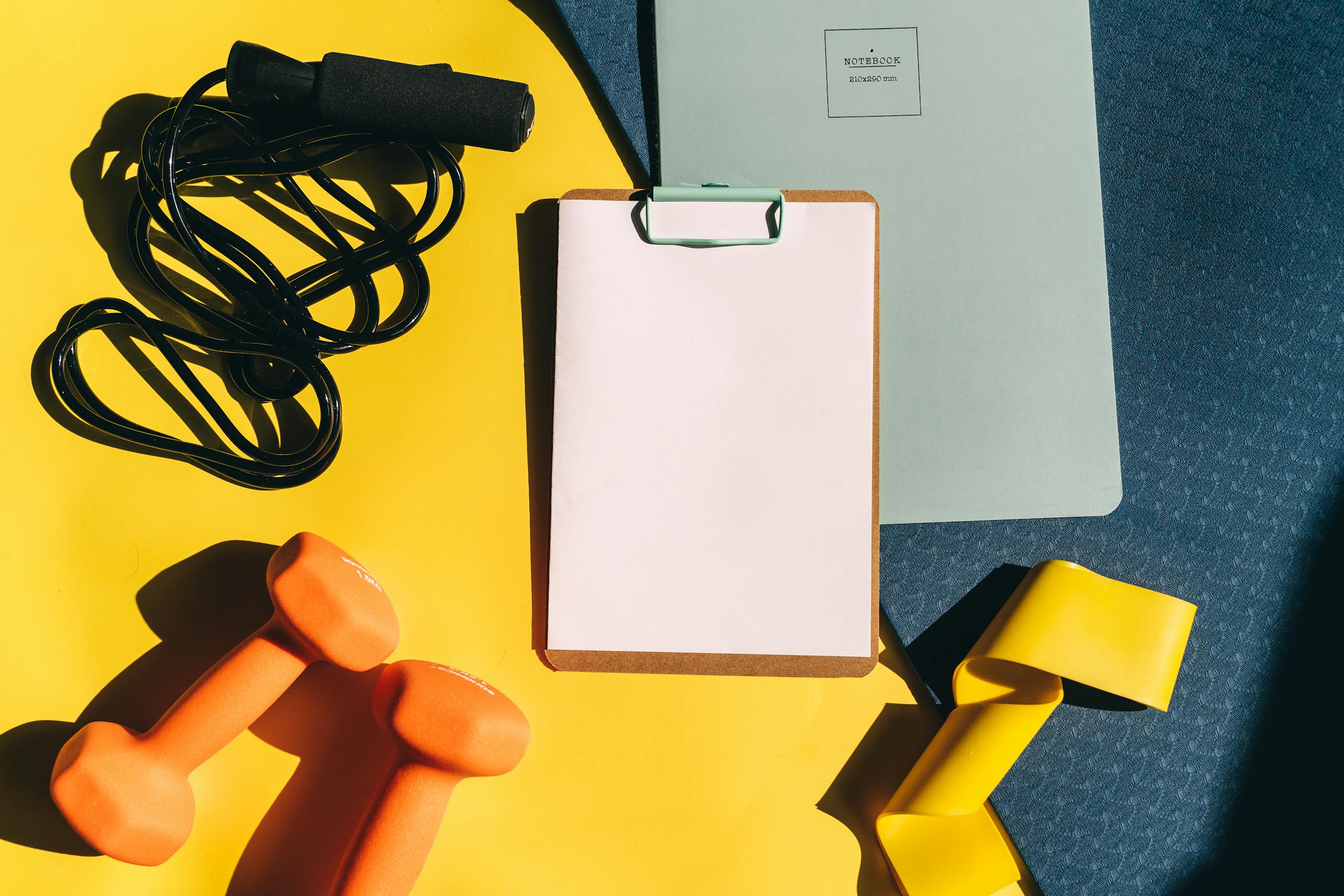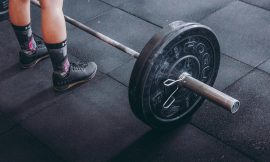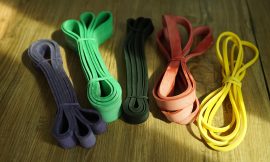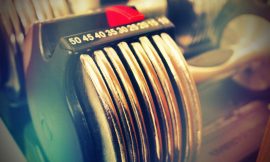You want to work out at home, but your apartment barely has room for a coffee table — let alone a full gym setup. So you’re stuck trying to decide: resistance bands or dumbbells?
Both can give you a solid workout. Both fit in small spaces (kind of). But which one is actually better for your situation? Let’s break it down so you can stop overthinking and start working out.
Storage: Where Are You Going to Keep This Stuff?
Let’s start with the most obvious question for small-space living: where does it go when you’re not using it?
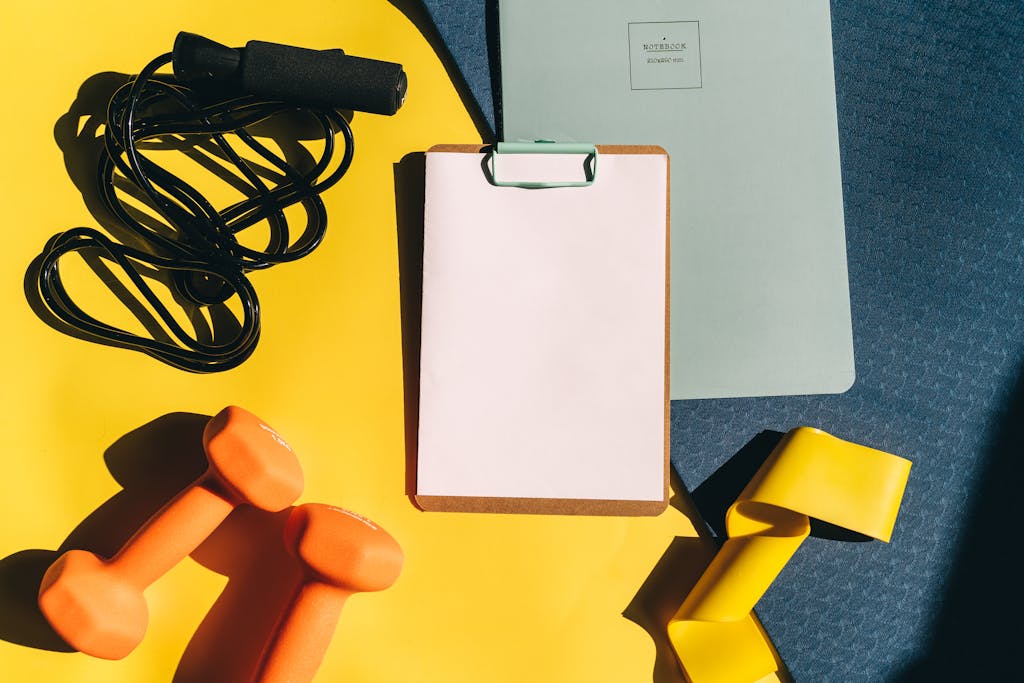
Resistance bands are the clear winner here. You can fold them up and toss them in a drawer, hang them on a hook, or stuff them in a tote bag under your bed. They take up about as much space as a pair of socks. If you’re living in a studio or sharing a tiny apartment, bands won’t add to your clutter problem.
Dumbbells, on the other hand, need a home. Even a single pair takes up floor space or shelf space, and if you want multiple weights, you’re looking at a small footprint that starts to add up. Adjustable dumbbells help — they let you swap weight plates instead of buying five different pairs — but they’re still bulkier than bands and can’t exactly hide in a drawer. If you’re struggling with where to put workout gear in a tiny space, our guide on vertical storage hacks for small apartments has some clever solutions for keeping equipment organized without cluttering your floor.
If storage is your biggest concern, bands win. But if you’ve got a corner or a closet shelf you can dedicate to weights, dumbbells are totally manageable.
Cost: What’s the Damage to Your Wallet?
Resistance bands are cheap. You can get a solid set for $15-$30, and even high-quality bands with handles and door anchors rarely top $50. If you’re on a tight budget or just testing the waters with home workouts, bands are a low-risk investment.
Dumbbells cost more upfront. A single pair of 10-pound dumbbells might run you $20-$40, and if you want a full range of weights, you’re looking at $100+ easily. Adjustable dumbbells (like Bowflex or PowerBlock) save space but can cost $200-$400 depending on the brand and weight range.
That said, dumbbells last forever. Bands can snap or lose tension over time, especially if you’re using them daily. So while dumbbells cost more upfront, they might actually be the better long-term investment if you’re serious about sticking with it.
Versatility: What Can You Actually Do With Them?
Both resistance bands and dumbbells can handle a full-body workout, but they work a little differently.
Resistance bands are great for dynamic movements and constant tension. You can do bicep curls, shoulder presses, squats, rows, and even assisted pull-ups. They’re also perfect for stretching, mobility work, and rehab exercises. The downside? Resistance changes throughout the movement — it’s easier at the start and harder at the end — which feels different from lifting a solid weight.
Dumbbells give you consistent resistance through the entire movement, which makes them ideal for building raw strength. You can do presses, curls, lunges, deadlifts, and pretty much any classic weightlifting move. The weight you pick up is the weight you’re lifting start to finish. They’re also easier to track progress with — if you can lift a 20-pound dumbbell today and a 25-pound dumbbell next month, you know you’re getting stronger.
If you want flexibility and portability (or you travel a lot), bands are tough to beat. But if you’re chasing strength gains and want that classic “lifting weights” feel, dumbbells are the move.
Effectiveness: Will You Actually See Results?
Here’s the good news: both work. You can build muscle, get stronger, and stay in shape with either resistance bands or dumbbells. The key is progressive overload — gradually increasing resistance over time.
Resistance bands make it a little trickier to track progress since resistance isn’t measured in pounds. You’ll rely more on feel, reps, and band thickness. But if you’re consistent, you’ll absolutely see results. They’re especially effective for toning, endurance, and functional fitness.
Dumbbells make tracking progress straightforward. You can see exactly how much weight you’re lifting and aim to lift more over time. If your goal is to build noticeable muscle or hit specific strength benchmarks, dumbbells give you clearer feedback.
Bottom line: if you’re just trying to stay fit and toned, bands are more than enough. If you’re training for strength or aesthetics, dumbbells might get you there faster.
Noise and Neighbors: Will Your Downstairs Neighbor Hate You?
If you live in an apartment with thin floors, this matters.
Resistance bands are silent. No dropping, no clanging, no angry texts from your neighbor. You can work out at 6 a.m. or 11 p.m. without worrying about noise complaints.
Dumbbells can be loud if you’re not careful. Setting them down after a heavy set can sound like a small earthquake to the person below you. If you go this route, invest in a rubber mat or foam tiles to absorb sound and protect your floors.
So, Which One Should You Choose?
Honestly? It depends on your priorities.
Choose resistance bands if:
- You have zero storage space
- You’re on a tight budget
- You travel often or move frequently
- You want a quiet workout
- You’re focused on toning, flexibility, or rehab
Choose dumbbells if:
- You have a corner, closet, or shelf you can dedicate to weights
- You’re serious about building strength
- You like tracking progress in pounds
- You want equipment that’ll last for years
- You don’t mind a little extra noise (or you have a mat)
Or do both. A set of resistance bands and one or two pairs of dumbbells gives you the best of both worlds. Use bands for warm-ups, mobility, and travel. Use dumbbells for strength training at home. Together, they cover pretty much everything — and you can still fit it all in a small apartment.
You don’t need a massive home gym to stay strong and fit. Whether you go with resistance bands, dumbbells, or both, the best equipment is the one you’ll actually use. Start with what fits your space and budget, and build from there.
And if you’re looking for more small-space fitness tips, subscribe to our newsletter — we’ll send you practical workout hacks and gear recommendations straight to your inbox.


